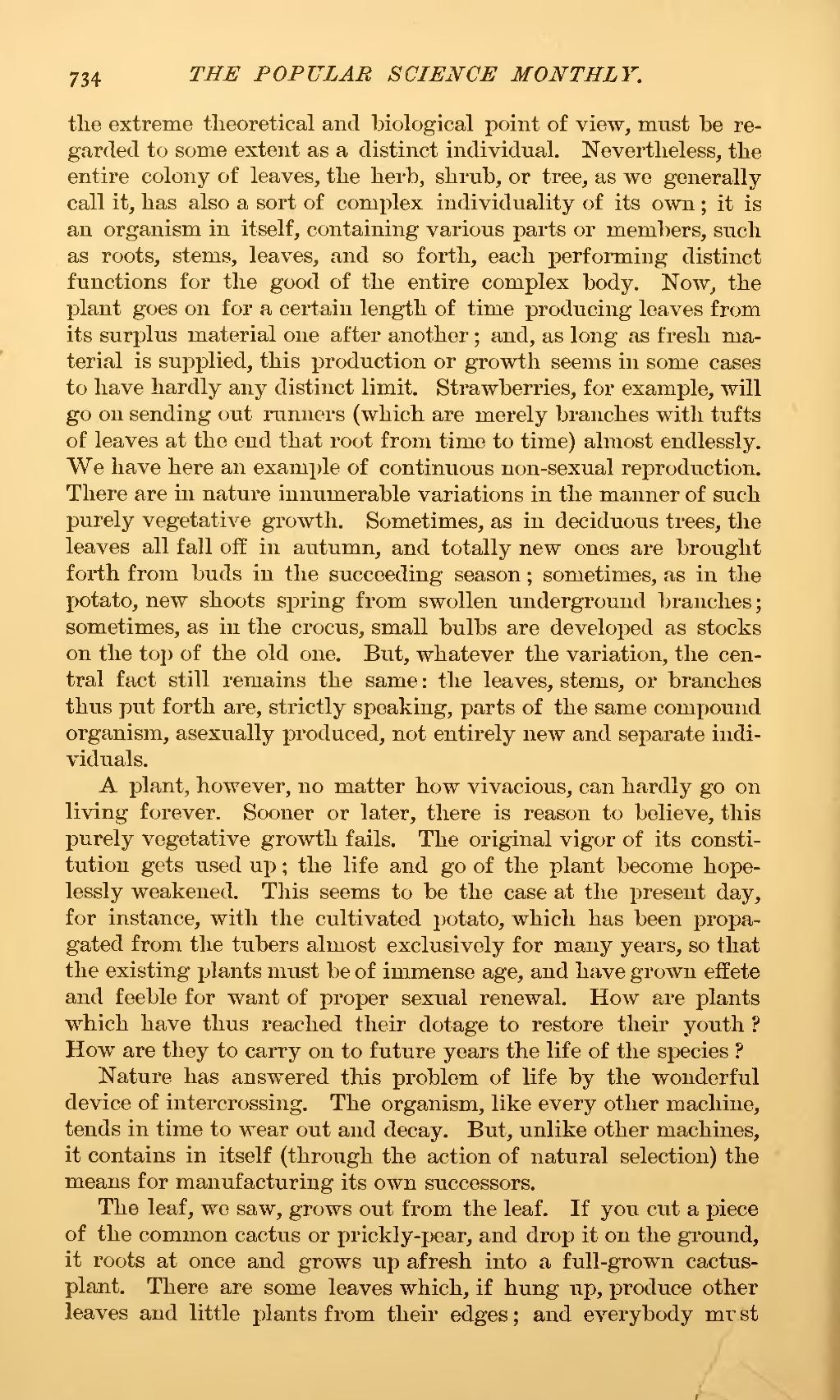the extreme theoretical and biological point of view, must be regarded to some extent as a distinct individual. Nevertheless, the entire colony of leaves, the herb, shrub, or tree, as we generally call it, has also a sort of complex individuality of its own; it is an organism in itself, containing various parts or members, such as roots, stems, leaves, and so forth, each performing distinct functions for the good of the entire complex body. Now, the plant goes on for a certain length of time producing leaves from its surplus material one after another; and, as long as fresh material is supplied, this production or growth seems in some cases to have hardly any distinct limit. Strawberries, for example, will go on sending out runners (which are merely branches with tufts of leaves at the end that root from time to time) almost endlessly. We have here an example of continuous non-sexual reproduction. There are in nature innumerable variations in the manner of such purely vegetative growth. Sometimes, as in deciduous trees, the leaves all fall off in autumn, and totally new ones are brought forth from buds in the succeeding season; sometimes, as in the potato, new shoots spring from swollen underground branches; sometimes, as in the crocus, small bulbs are developed as stocks on the top of the old one. But, whatever the variation, the central fact still remains the same: the leaves, stems, or branches thus put forth are, strictly speaking, parts of the same compound organism, asexually produced, not entirely new and separate individuals.
A plant, however, no matter how vivacious, can hardly go on living forever. Sooner or later, there is reason to believe, this purely vegetative growth fails. The original vigor of its constitution gets used up; the life and go of the plant become hopelessly weakened. This seems to be the case at the present day, for instance, with the cultivated potato, which has been propagated from the tubers almost exclusively for many years, so that the existing plants must be of immense age, and have grown effete and feeble for want of proper sexual renewal. How are plants which have thus reached their dotage to restore their youth? How are they to carry on to future years the life of the species?
Nature has answered this problem of life by the wonderful device of intercrossing. The organism, like every other machine, tends in time to wear out and decay. But, unlike other machines, it contains in itself (through the action of natural selection) the means for manufacturing its own successors.
The leaf, we saw, grows out from the leaf. If you cut a piece of the common cactus or prickly-pear, and drop it on the ground, it roots at once and grows up afresh into a full-grown cactus plant. There are some leaves which, if hung up, produce other leaves and little plants from their edges; and everybody must

